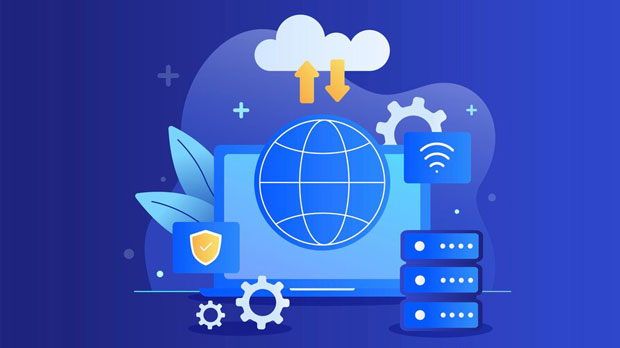In the modern digital workspace, remote work has become increasingly common. As remote teams often rely on various tools and networks, ensuring seamless and secure communication is essential. Proxies play a crucial role in maintaining privacy, data integrity, and improving network efficiency. Two prominent players in the proxy field are PYPROXY and Charles Proxy, which offer wireless proxy capabilities for remote work scenarios. But are these tools truly effective in such environments? This article compares the two, evaluating their functionalities, advantages, and challenges for remote teams. Understanding PyProxy and Charles ProxyBefore delving into their use in remote work, it's important to understand what PyProxy and Charles Proxy are, and how they work in general. Both tools function as intermediaries that route traffic between a client and a server, but their setups and features differ.PyProxy is a lightweight and customizable proxy solution. It’s often used in data analysis and scraping projects, where control over the proxy environment is critical. PyProxy is more flexible when it comes to scripting and automating tasks, making it suitable for developers and tech-heavy remote work setups.Charles Proxy, on the other hand, is a popular debugging proxy. It is primarily used for monitoring and analyzing network traffic between a client (usually a browser or mobile application) and a server. While Charles Proxy is excellent for debugging and reverse engineering, it is also a reliable tool for remote workers who need to optimize their workflows by tracking network performance or fixing network issues.Performance and SpeedWhen working remotely, network speed and performance are crucial for ensuring smooth communication and efficient work processes. Both PyProxy and Charles Proxy impact network speed, but in different ways.PyProxy is lightweight and provides better speed when used for smaller-scale operations. However, as the workload increases, especially in complex remote work setups that involve large datasets or high traffic, PyProxy may experience slowdowns, especially if it lacks efficient load-balancing capabilities.Charles Proxy, although more feature-rich and powerful, can be slightly heavier on system resources, particularly in high-traffic environments. While it excels in monitoring large-scale traffic and provides a more detailed analysis, users may experience slower response times during intense traffic sessions or when handling multiple users simultaneously.For remote workers, Charles Proxy may be ideal in scenarios where detailed network analysis and performance monitoring are needed, while PyProxy could be more suited for simple and lightweight tasks.Security ConsiderationsIn a remote work environment, ensuring secure communication between team members and external networks is paramount. Both PyProxy and Charles Proxy offer security features, but there are important differences.PyProxy offers basic encryption and anonymization features, but being more customizable, it’s often tailored to specific needs. Developers and network administrators can configure PyProxy to meet specific security requirements, making it a good choice for small-scale, secure remote setups where specific encryption protocols are needed.Charles Proxy, on the other hand, is widely used for SSL proxying, which allows users to decrypt SSL traffic for inspection. While this feature is excellent for debugging and ensuring secure communication, it can also be a double-edged sword in the hands of attackers. Therefore, its use in remote work environments requires caution, ensuring that it is used only in trusted networks and not for spying or unauthorized access.Overall, PyProxy may be more suitable for security-conscious teams who require deep control over their network settings, while Charles Proxy is more effective for remote workers who need to inspect and debug encrypted traffic.Ease of Use and SetupFor remote workers, ease of use and setup are important factors in choosing between different proxy solutions. Time is often limited, and having a tool that can be easily integrated into daily workflows is crucial.PyProxy is designed for developers and tech-savvy users. While its setup is relatively straightforward for those with a programming background, it might not be as intuitive for non-technical users. If the remote team lacks IT professionals or developers, it may take longer to set up and configure PyProxy for optimal use.Charles Proxy is known for its user-friendly interface, making it easier for non-developers to understand and use. The graphical interface provides detailed visual representations of network traffic, making it accessible to a broader audience, including remote workers without technical expertise. However, the complexity of its features may require some time for users to fully grasp.In terms of setup, Charles Proxy wins in terms of ease of use and setup, while PyProxy offers more customization but at the cost of user-friendliness.Scalability and FlexibilityRemote work scenarios often involve collaboration among different team members, sometimes across multiple locations. The ability to scale and adapt to changing needs is essential for long-term success.PyProxy is highly flexible and scalable due to its open-source nature and scriptability. It allows remote teams to tailor it to their specific needs and expand its functionality as required. However, scalability may require additional programming skills, making it more suitable for teams with a strong technical background.Charles Proxy, although feature-rich, does not offer the same level of flexibility as PyProxy. Its scalability is more limited, as it is primarily designed for debugging and traffic analysis, rather than as a dynamic proxy for scaling large-scale operations. Remote teams needing real-time collaboration over large networks may find PyProxy more adaptable to their needs.Thus, for remote teams with growing or evolving needs, PyProxy is likely the better option, offering better scalability with the right technical expertise.Cost and LicensingFinally, the cost of these proxies is an important consideration for businesses and remote workers operating on tight budgets.PyProxy is an open-source tool, meaning there is no cost involved unless users opt for additional services or support. This makes it an attractive option for small businesses or freelancers working remotely.Charles Proxy, on the other hand, requires a paid license for full access to its features. While it offers a 30-day free trial, remote workers or teams need to consider the ongoing cost of using Charles Proxy over time. For remote teams with a more established budget and need for robust features, the cost may be justified, but for individuals or small teams, it may be a burden.Conclusion: Which Proxy is Better for Remote Work?Both PyProxy and Charles Proxy offer distinct advantages for remote work scenarios, but the choice depends on the specific needs of the team or individual. - PyProxy is better for teams with technical expertise who need a lightweight, customizable proxy solution for data analysis, scraping, or secure traffic routing. It offers greater scalability and flexibility but requires more technical skills to set up and maintain.- Charles Proxy is ideal for remote workers who require a more user-friendly and robust tool for debugging, inspecting network traffic, and improving performance. While it can be heavier on system resources and is limited in scalability, its ease of use makes it a solid choice for a wide range of remote workers.In conclusion, the best proxy for remote work largely depends on your team's technical capabilities, the complexity of your network environment, and the specific use cases. If security, scalability, and customization are your priorities, PyProxy is likely the better choice. If ease of use and detailed network inspection are more important, Charles Proxy may be the right solution.
Oct 20, 2025



































































